-
Version History Timeline
Remote instances can now make use of the new Timeline feature, providing a concise, chronological view of key activities within your Node-RED remote setup.
The Timeline and Snapshots are now grouped together under the Version History tab, simplifying the navigation of your remote instance's history.
This feature is only available to Enterprise license and Cloud Team users. Note that the Timeline can only be accessed at the remote instance level.
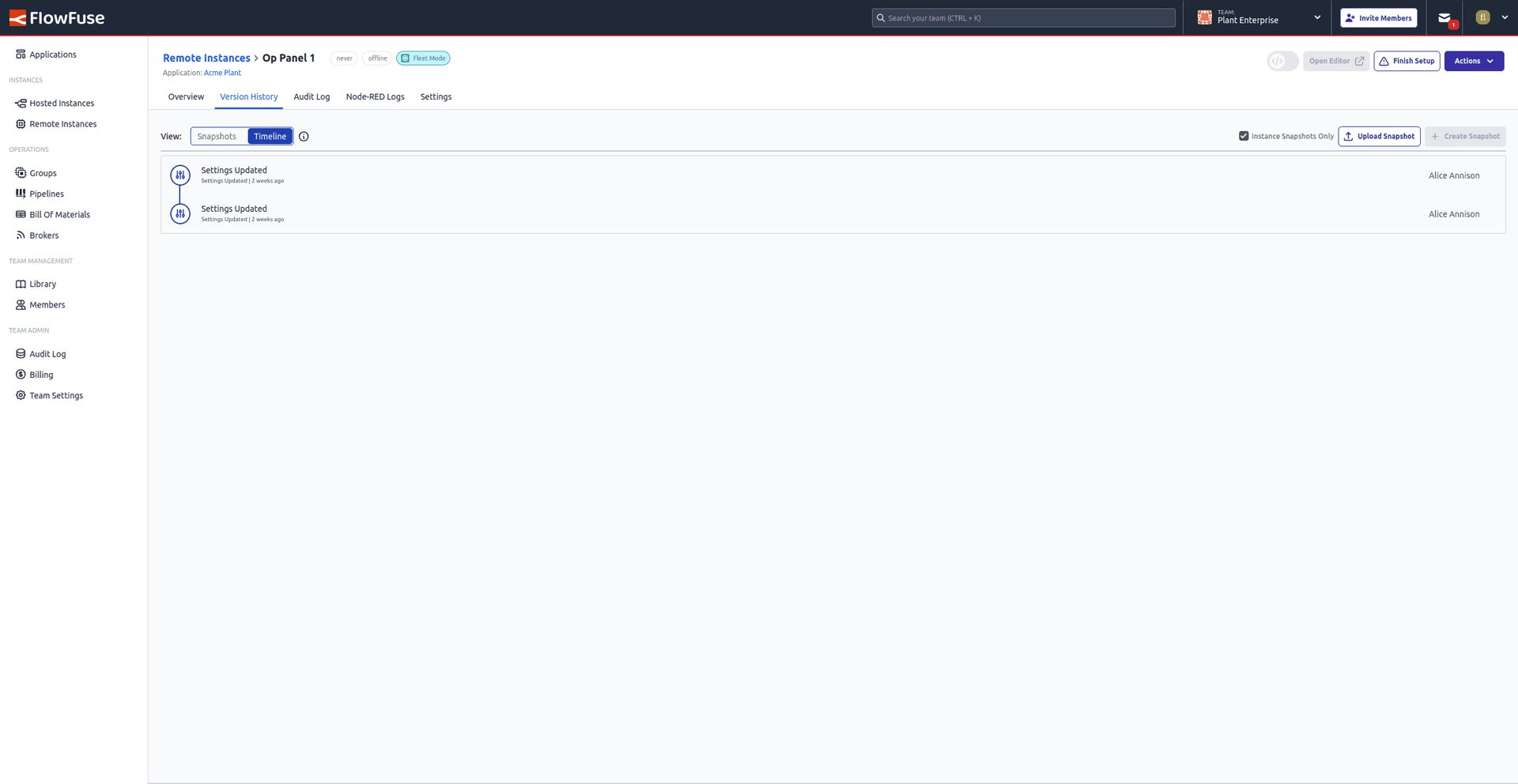
Screenshot showing the new version history timeline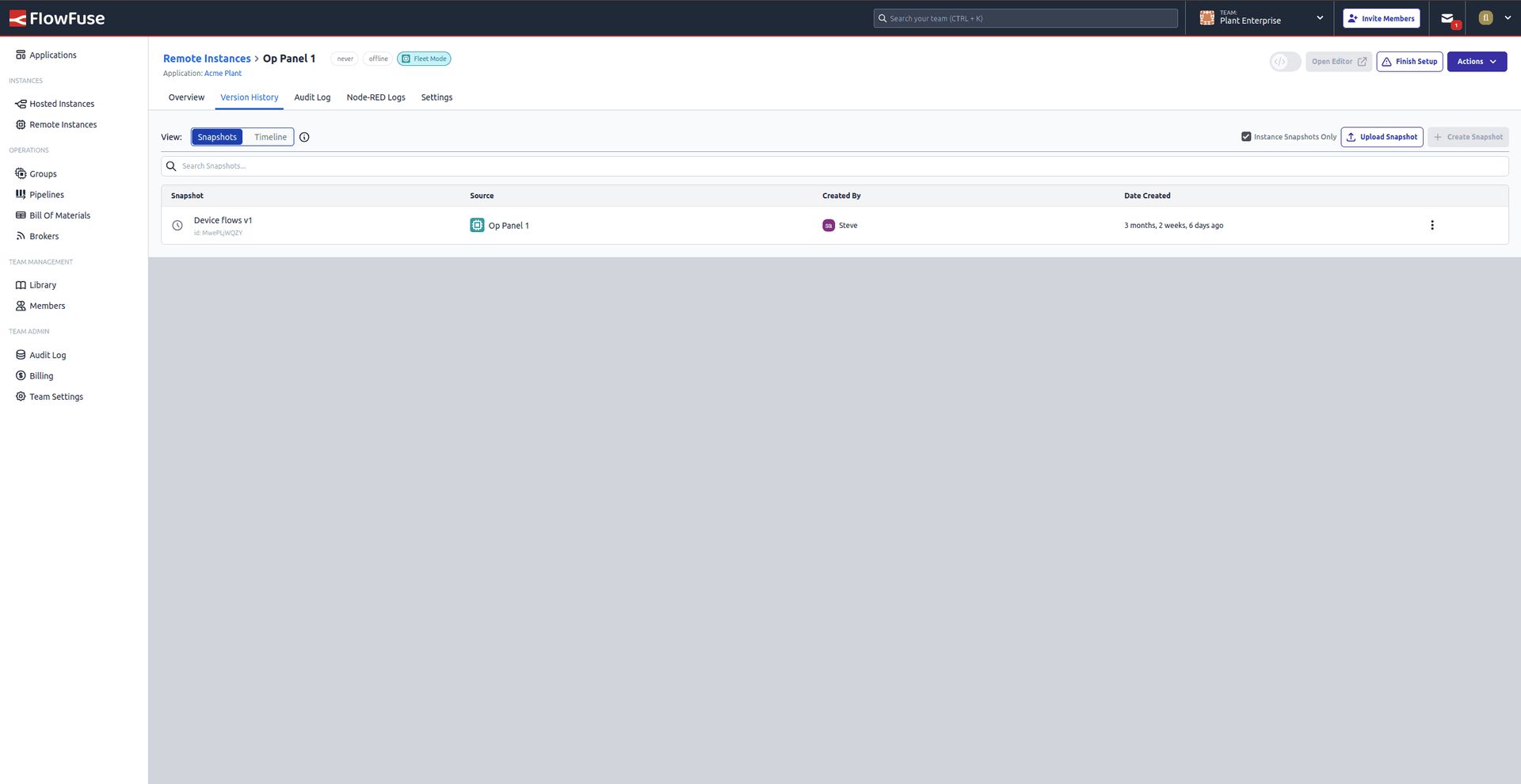
Screenshot showing the relocated snapshot page under the version history tab -
External MQTT Brokers
In a previous release, we introduced the FlowFuse Team Broker; an MQTT broker available to all instances running in your team. Whilst the Team Broker is a great addition, we are aware that many of our customers already have their own existing MQTT brokers and infrastructure.
We have now made it possible to connect the FlowFuse platform to your existing external MQTT broker. With that you'll get access to the same great features to help you gain a clear understanding of the activity on your broker, and the structure of the data and topics that are being used.
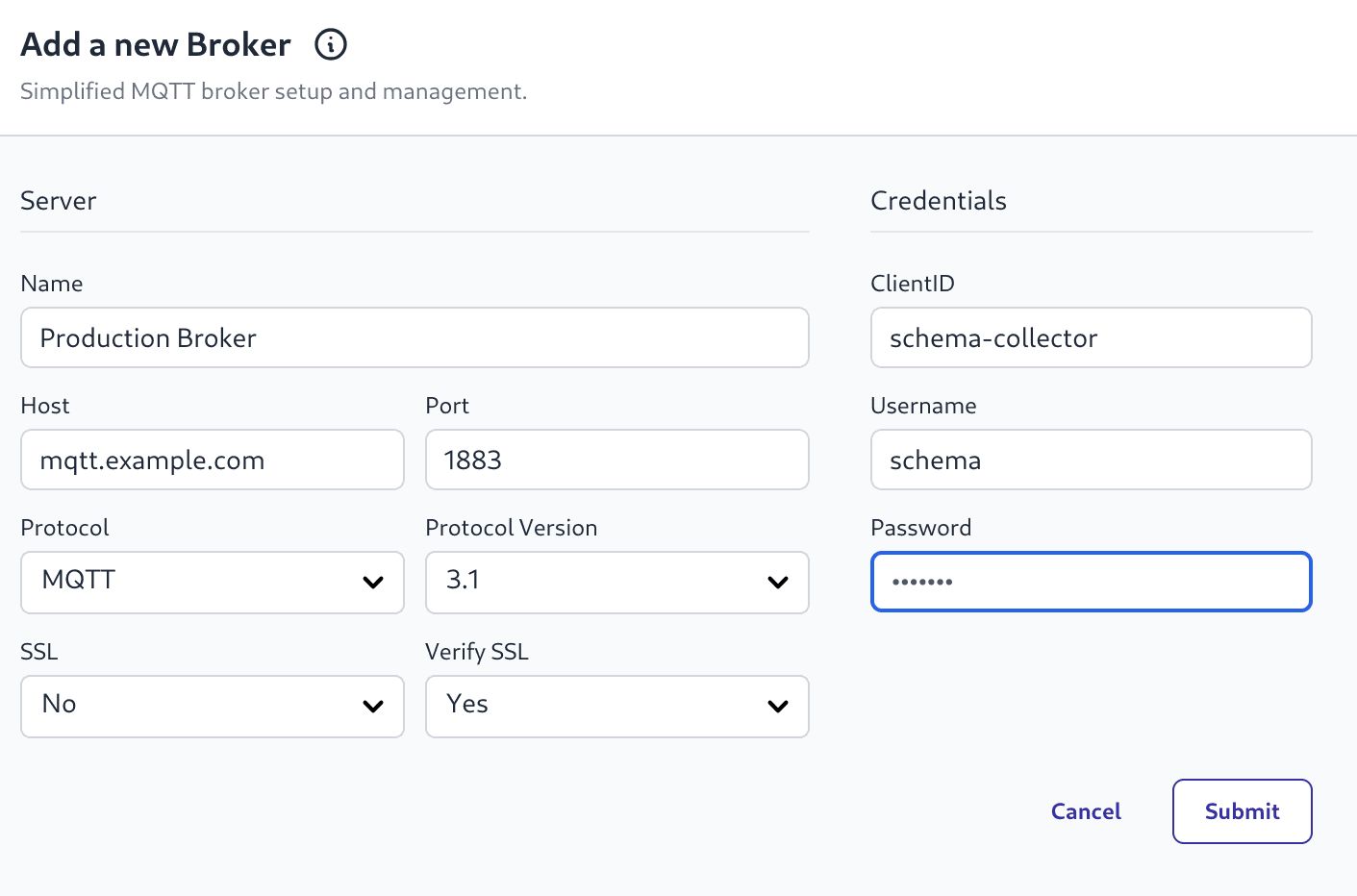
As well as building a topic schema, the message payloads will also be inspected to infer their format to help you understand your data.
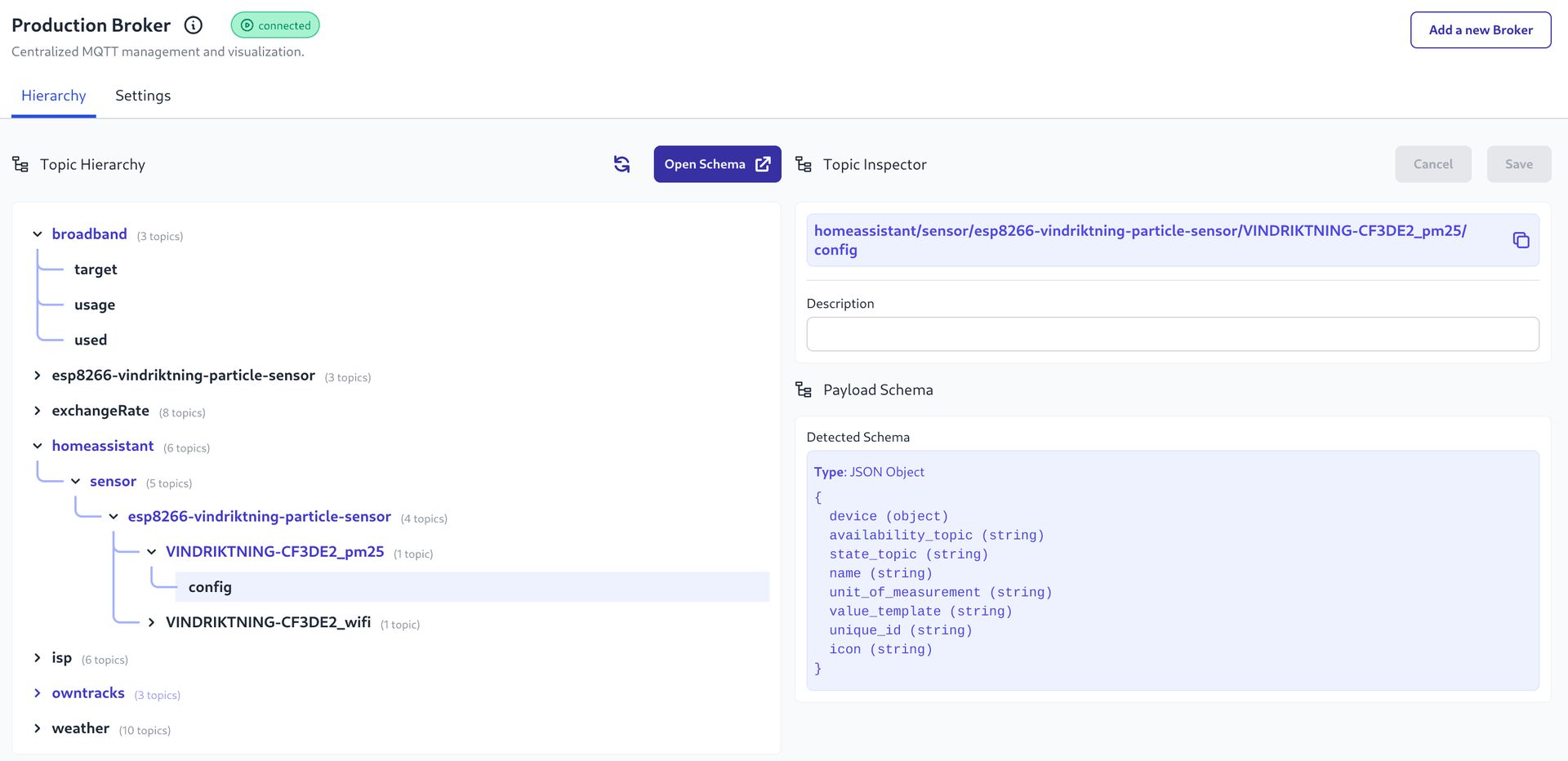
Whilst connected, the FlowFuse platform will monitor the messages being published on the broker and update the information every few minutes. This means there will be a short delay between a message being published to a topic and that topic being shown in the hierarchy.
This is available on FlowFuse Cloud and for Self Hosting users with an Enterprise License on Kubernetes and LocalFS. Docker support will follow shortly.
-
Hidden Environment Variables
We’ve expanded the functionality of managing Node-RED environment variables by introducing the ability to hide their values in the UI.
What’s new?
This feature is supported by both hosted and remote Node-RED instances.
- Users can now designate values as 'hidden' when creating or editing them.
- Hidden values are concealed in the UI for enhanced privacy and security.
- Once marked as hidden and saved:
- the name cannot be changed.
- the value can only be updated - its existing value cannot be seen.
- To make a value visible again, users must delete the entry and recreate it as a visible one.
This feature enhances security and allows for more control over sensitive configuration data, ensuring better management in your Node-RED workflows.
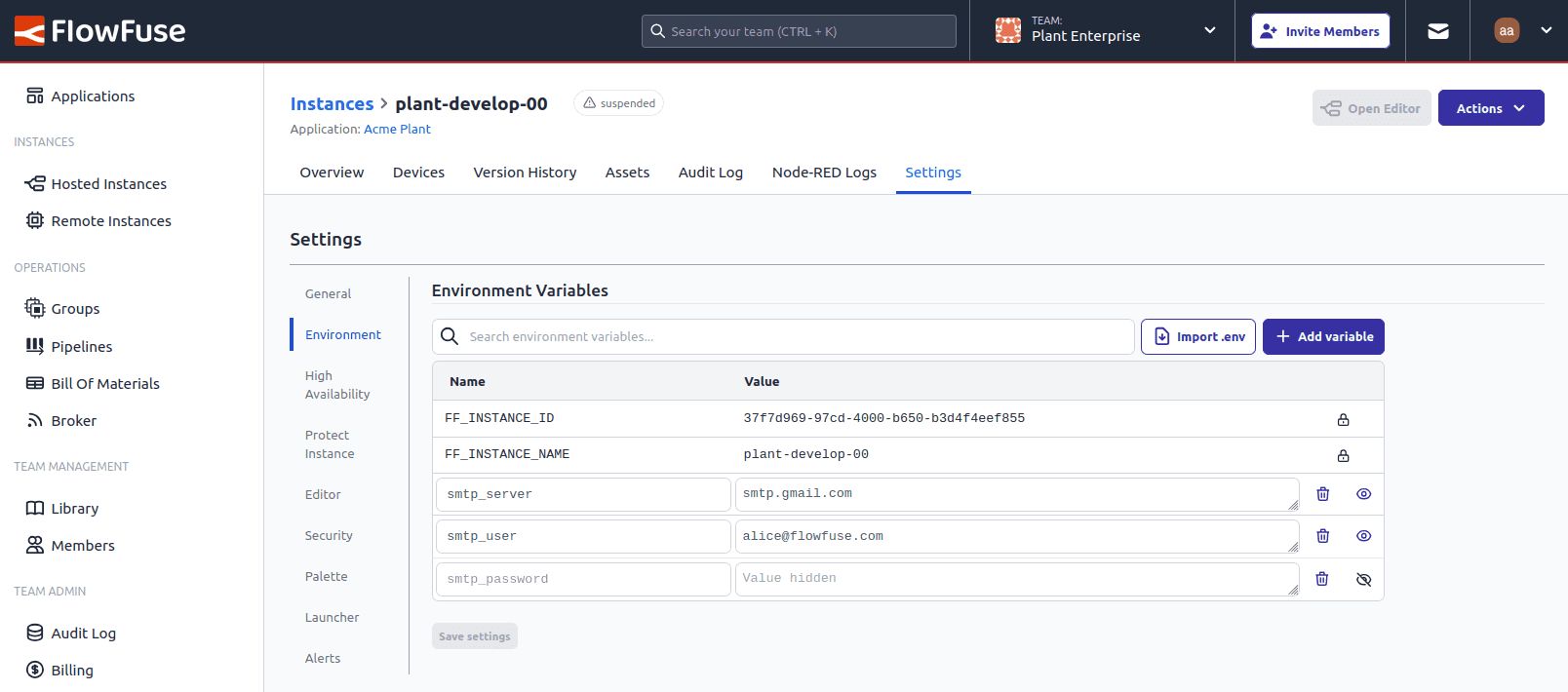
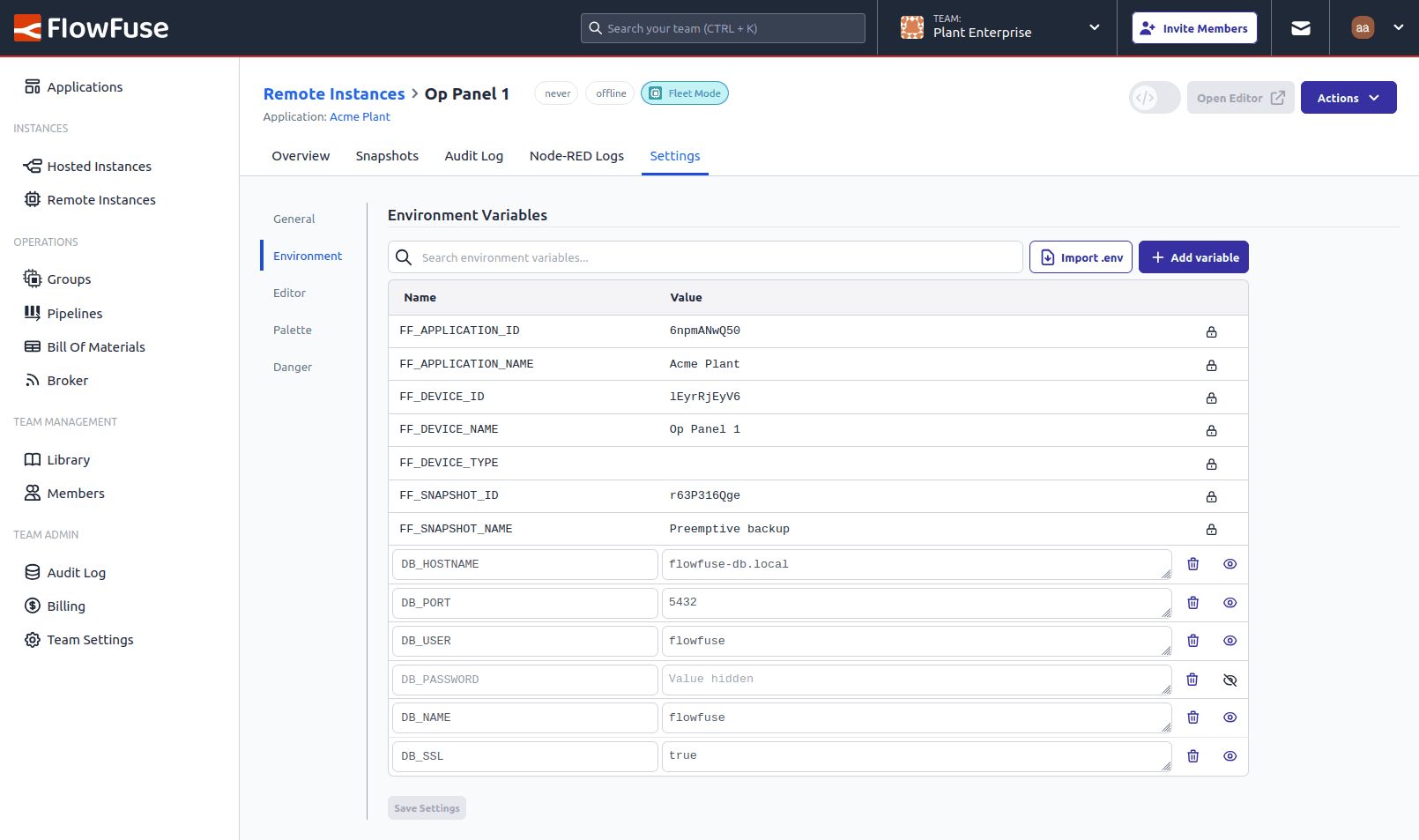
-
Team level view of Groups
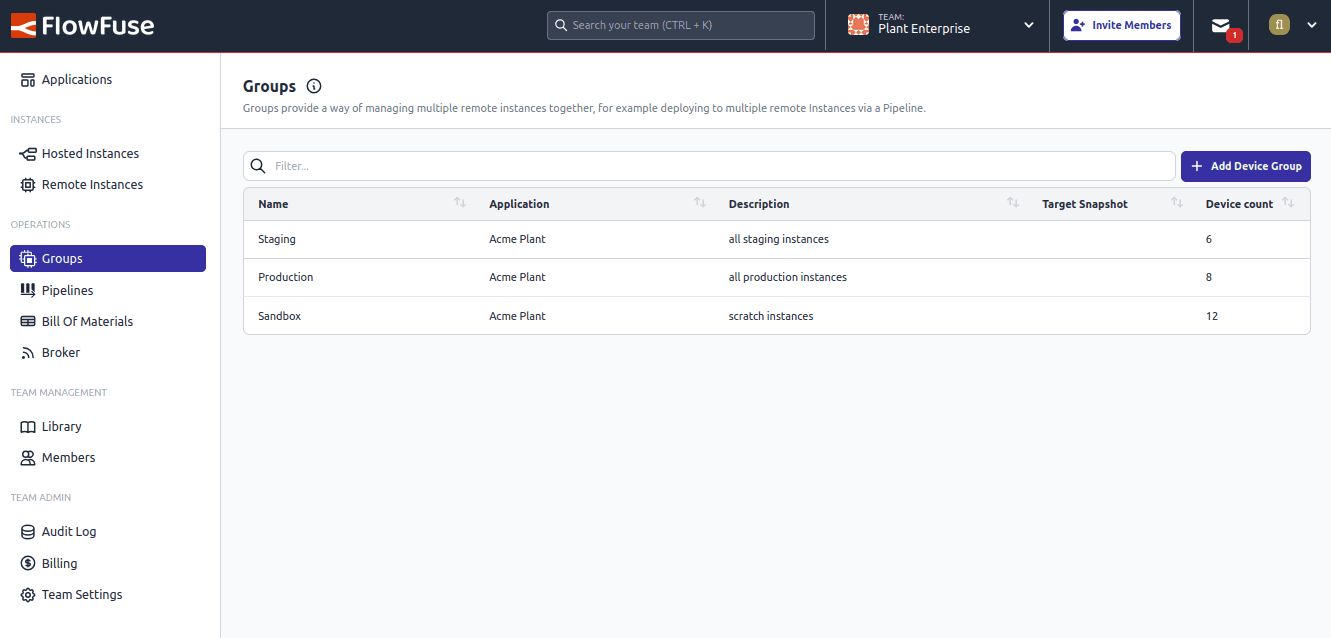
Managing remote instances is easier with the new Team-level view of Groups.
Groups let you organize your Remote Instances by application. They can then be used as a Target in DevOps pipelines for seamless updates across multiple instances in one operation.
This simplifies deployments, enhances collaboration, and streamlines infrastructure management for faster, more efficient workflows.
-
Improved Diagnostics
It happens! Sometimes things go wrong, but don't worry, we have you covered.
For Team and Enterprise customers on FlowFuse Cloud, we've improved the emails we send notifying you that something has gone wrong with one of your instances.
The emails now include more information about what has happened, including the most recent logs from Node-RED. We also include some tips as to what to do next, whether it was a code bug or a memory issue that triggered the problem.
We hope you never need to see these emails, but if you do, we hope they help you get back on track quickly.
-
New Onboarding Tour for Free Tier Users
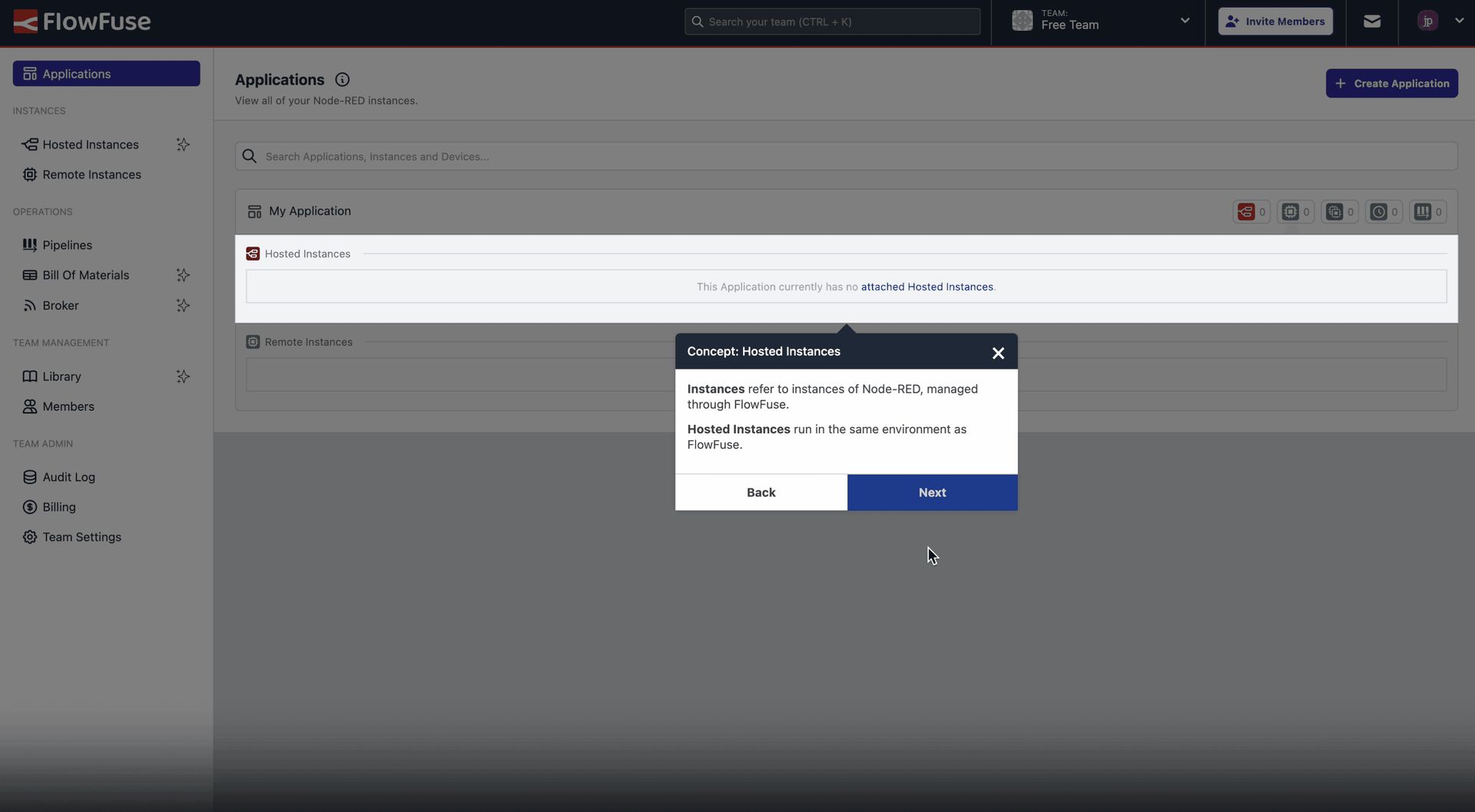
Following from our new "Free" tier on FlowFuse Cloud, we've also published a new onboarding tour to help users get started with their new team.
This tour will guide you through the process of setting up your first Remote Instance, and show you how to access your Node-RED instance through FlowFuse Cloud, using the remote access tools.
-
Device Editor Access Speed Up
With the 2.12 release we have included some improvements to the Device Editor experience.
For Devices running with Node-RED 4.0.x and newer, there should be significant performance improvements when loading the editor, especially when the device is on a slow network link.
-
Allow Dashboards to be embedded in iFrames
With the 2.12.0 release the correct HTTP Headers can now be set to allow Dashboards hosted in Node-RED Instances on FlowFuse to be embedded into other pages as iFrames.
This option is under the Instance Settings on the Editor section.

This feature will require the latest Stack version, you will be prompted to upgrade if required.

-
Team BOM and Pipeline Views
Team-level views of all Pipelines and Bill of Materials have been added to provide a complete overview.
The Bill of Materials view shows which components and their versions across all Node-RED Devices & Instances in the whole Team rather than at an Application level.

Similarly the Team Pipeline view shows all CI delivery pipelines in all the Applications in the Team, giving team members a quicker way to jump to a specific Pipeline.

-
Team-wide search
A new search bar has been added that makes it quick and easy to find resources within your team.
This expands on the search available on the Applications summary view - but by moving to the top header, it's now available on all pages.
For this release, it searches your Applications, Instances and Devices. We'll be expanding its coverage in future iterations to include other resources in the team.
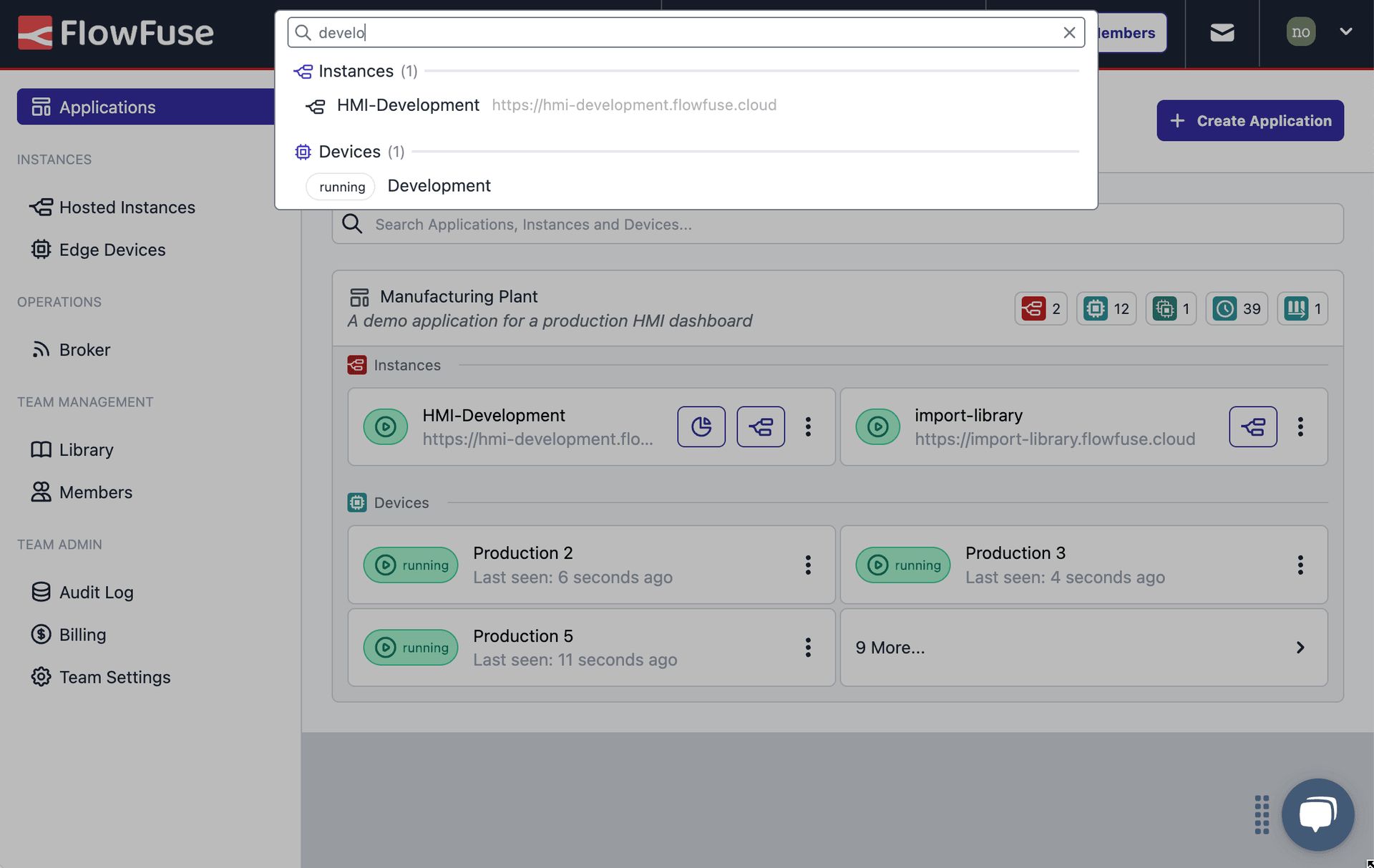
-
MQTT Topic Hierarchy view
Having recently added our very own MQTT Service to the platform, we're continuing to expand on the features and tools we provide to help teams build their solutions.
We have added a view that shows you what MQTT topics are being used on the Team Broker. This helps give you clarity on the structure of your topic-space, whether you're using the MQTT Broker for a unified namespace (UNS) or any other use case.
This is a small iteration of the feature but we'll have lots more to come.
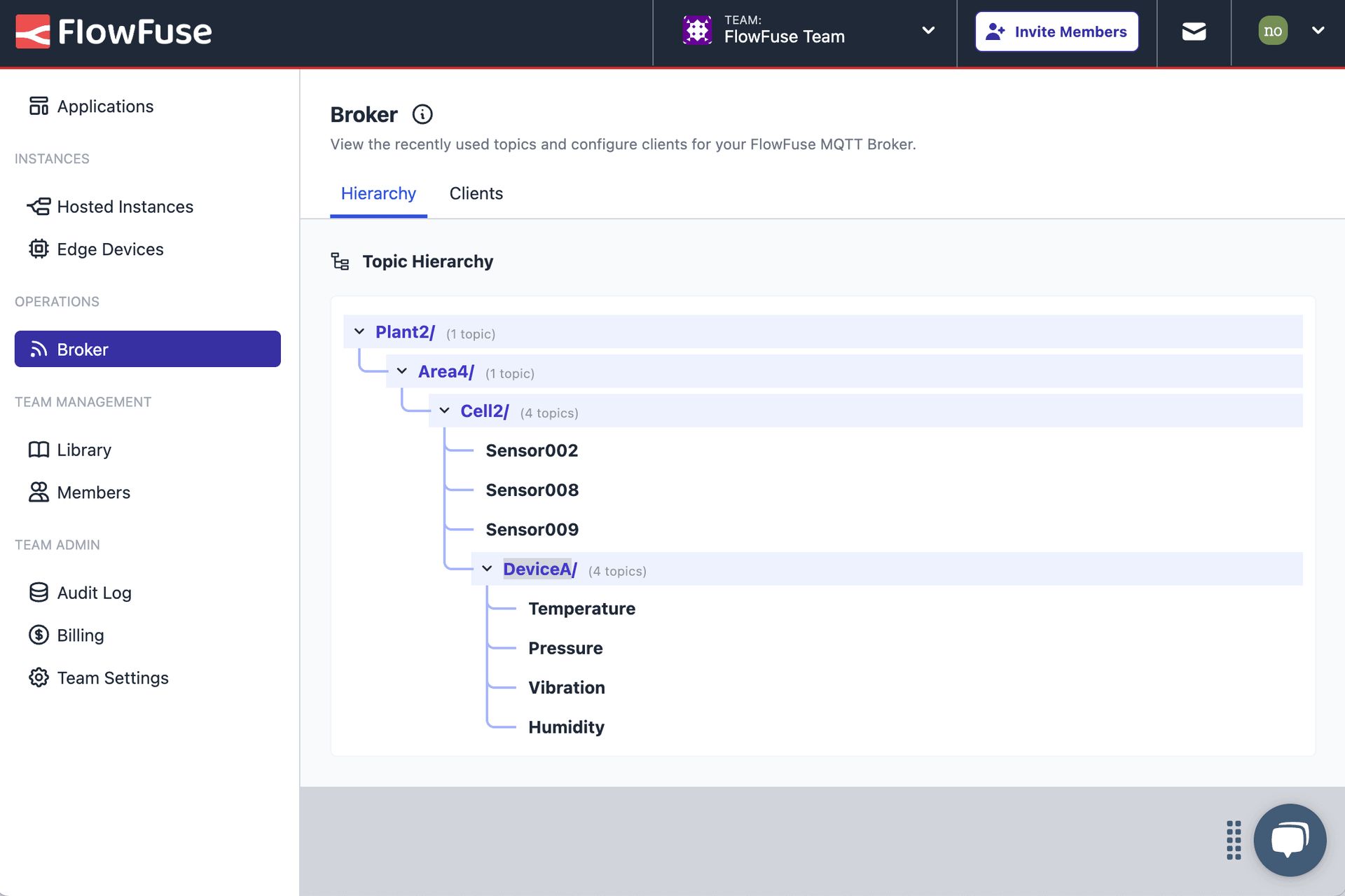
-
Audit logs show hierarchical events
In FlowFuse V2.11, we have updated the Audit Log views to let you see more of the events happening within your team. Previously, the Audit Log view would only show you top-level events happening to the application or team. With this release, it now provides an aggregated view of all of your resources. Additionally, each row contains an icon and name of the item raised the event that you can click to navigate straight to it making your workflow more streamlined.
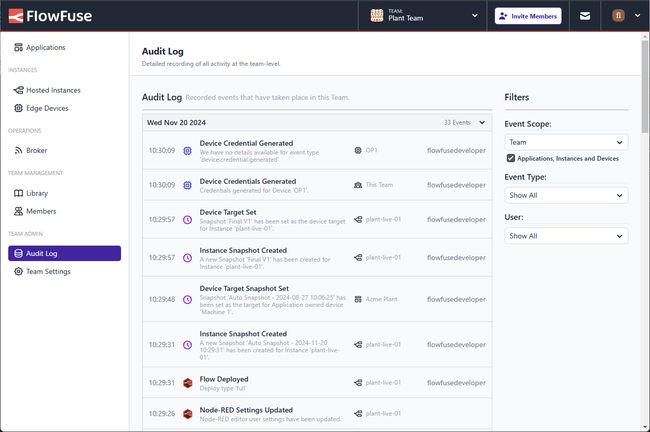
We hope this feature will help you better understand and navigate your FlowFuse applications.
-
Device Agent 3.0 released
The FlowFuse Device Agent is the piece of software we provide to manage Node-RED instances running anywhere outside of the FlowFuse platform.
Today we have released the latest version of the agent that now requires at least Node.js 18 to run. To reflect this change, we are releasing this as a new major version - 3.0.
We recognize that software update lifecycles can be a challenge in some environments. This is why we've held off dropping support for older Node.js versions for as long as we could. However, we have to balance that against ensuring we continue to keep the Device Agent up to date with the latest security fixes.
If your devices cannot be updated to the latest Node.js versions, then please ensure you stay on the 2.x release of the Device Agent until a time that you are able to update Node.js.
Details for upgrading to this release are available in the documentation.
-
Version History Timeline
Instances can now make use of the new Timeline feature, providing a concise, chronological view of key activities within your Node-RED instance.
The Timeline tracks important events such as pipeline stage deployments, snapshot restorations, flow deployments, snapshot creations, and updates to instance settings, offering clear insight into when and what changes have been made.
The Timeline and Snapshots are now grouped together under the Version History tab, simplifying the navigation of your instance's history.
This feature is only available to Enterprise license and Cloud Team users. Note that the Timeline can only be accessed at the instance level.
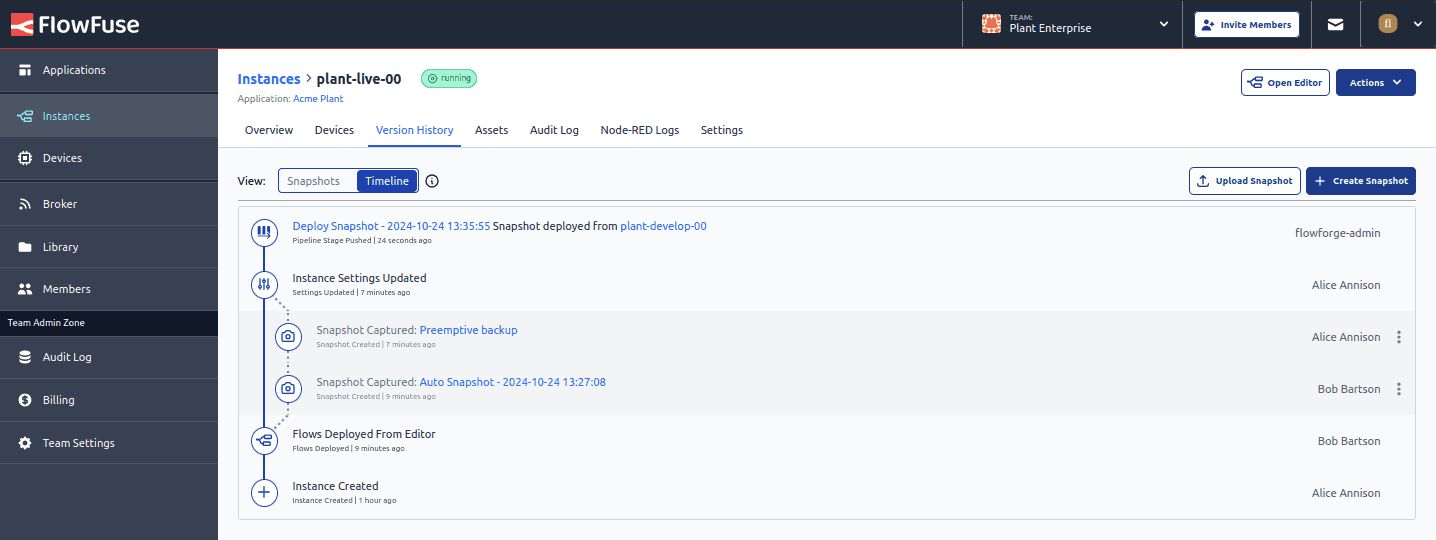
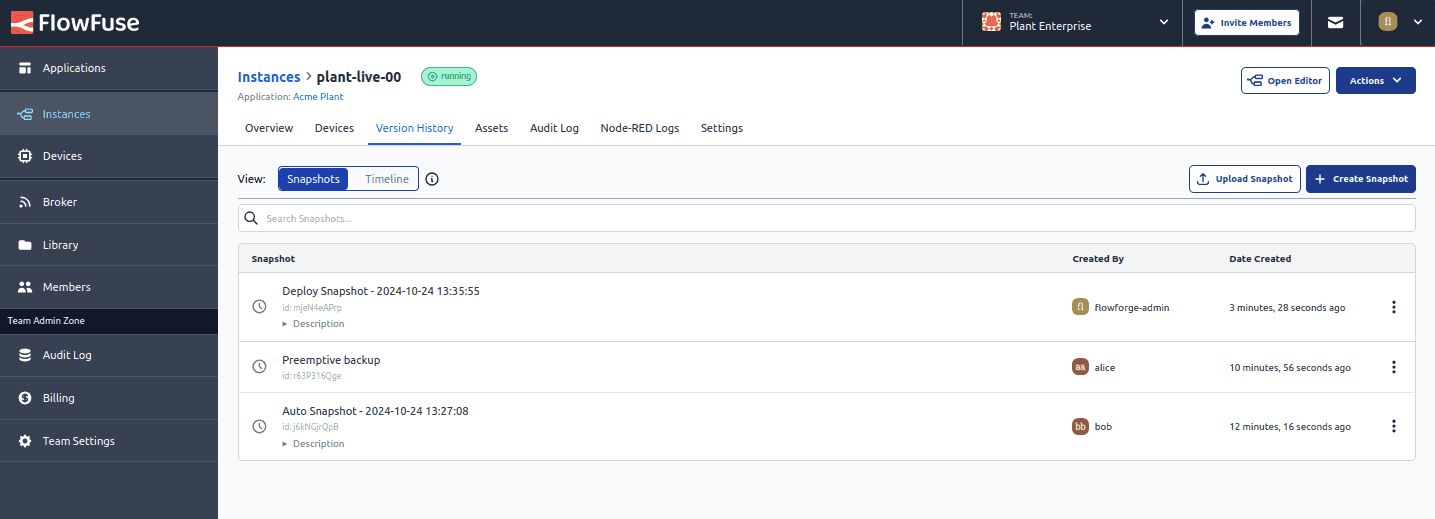
-
MQTT Broker Service
To celebrate 25 years since the first release of the MQTT Specification we are happy announce a new MQTT Broker Service as part of FlowFuse Cloud.
The initial deployment is available to Enterprise Teams and allows up to 20 clients to connect to the broker. Each team has their own independent topic space and can set their own topic ACLs to control what clients can access.
From today, this feature is available to FlowFuse Cloud Enterprise Teams. We'll be bringing it to Self-Hosted customers in the near future, as well as adding the ability to purchase additional packs of clients.
See the broker documentation for more details.
-
Environment Variables for your Device Groups
We have added the ability to set Environment Variables on a Device Group. This allows you to set common values that all member devices can make use of.
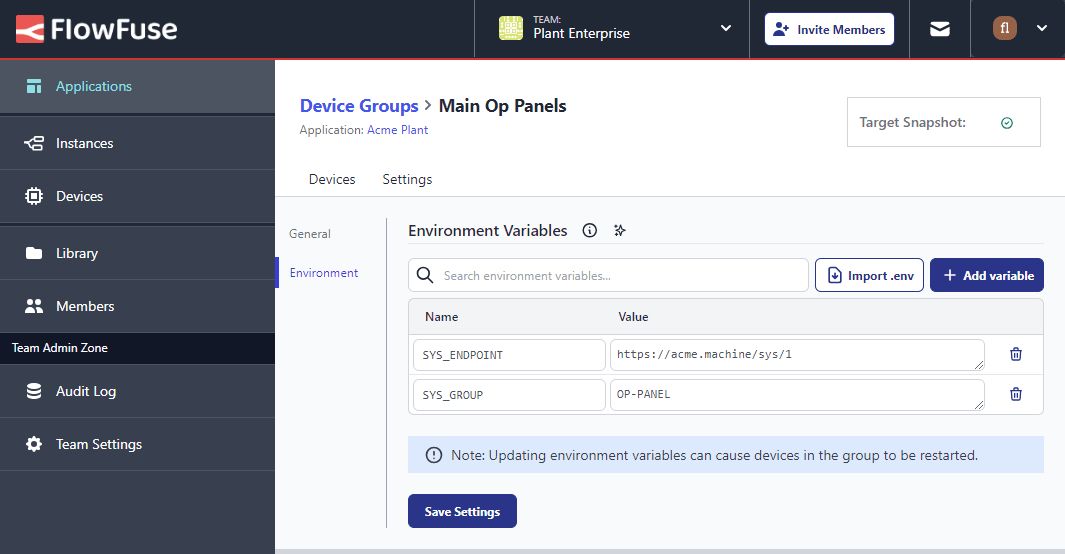
We hope this feature will make it easier to manage your devices and keep your configuration in one place.
See the Device Group documentation for more information on how to set environment variables for your device groups.
-
Snapshot Upload and Download Improvements
We have added the ability to select which components of a snapshot you want to keep when downloading or uploading a snapshot.
The options available are:
- Flows: Include the flows of the snapshot
- Credentials: Include the credentials of the snapshots flows
- Environment Variables
- Keys and Values: Include the keys and values of the environment variables
- Keys Only: Include only the keys of the environment variables
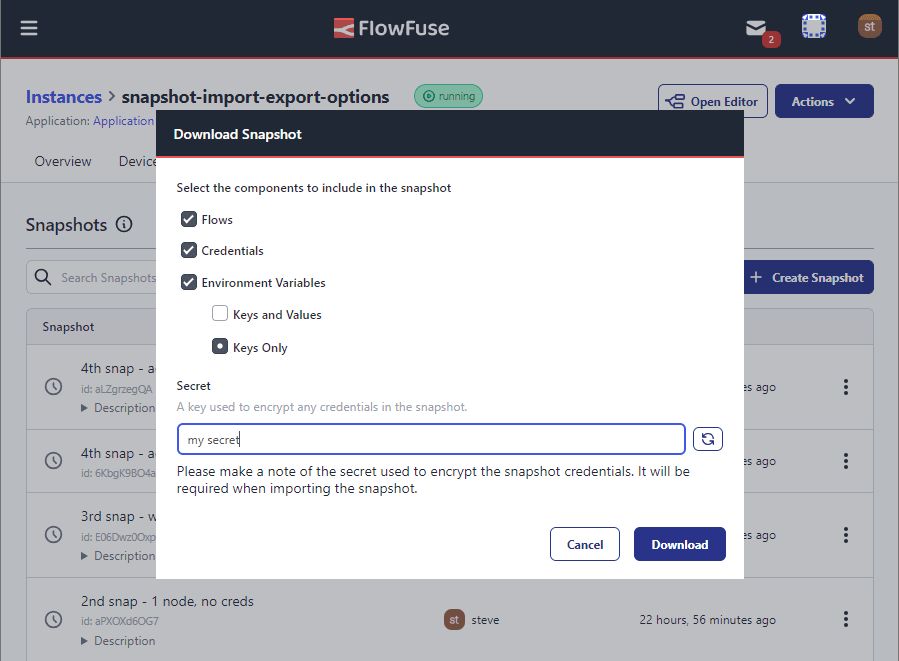
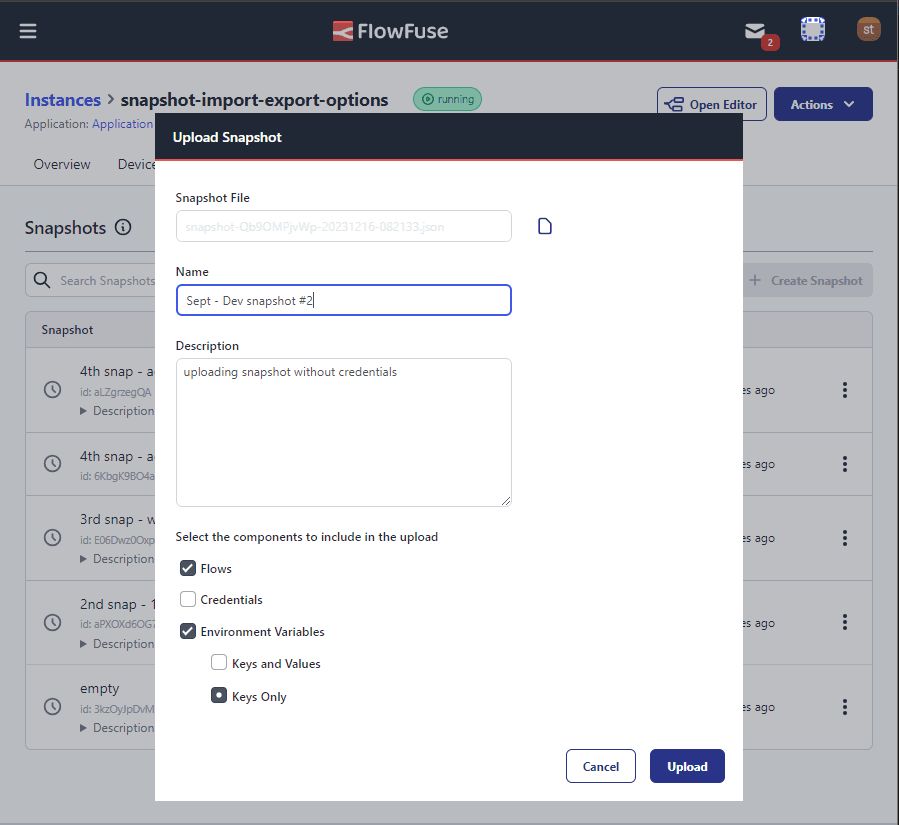
This feature can help you be specific about what you want to include in a downloaded snapshot. This is especially useful when you want to share a snapshot with others, but don't want to include sensitive information like credentials. Also, when you receive a snapshot that needs importing into a different FlowFuse platform or team, you can can now be selective about what to keep and what to exclude.
See the Snapshots documentation for more information.
-
Managing Notifications
We have now added the ability to manage notifications in bulk. This allows users to select more than one notification so that they can be marked as read, or marked as unread, all in one go.
We hope this small improvement saves you bundle of clicks and streamlines your operations.
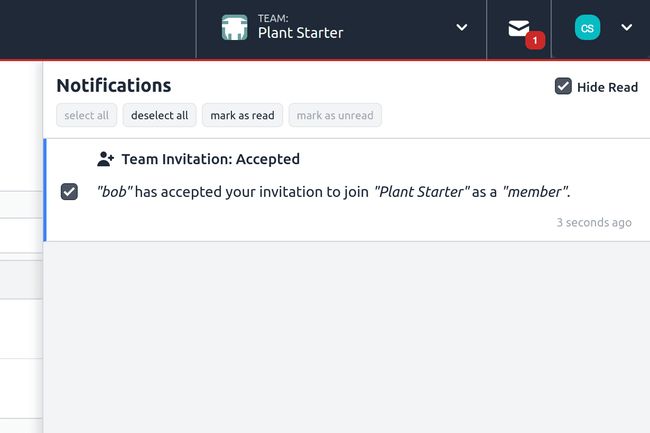
-
Bill of Materials
Starting with the v2.9.0 release FlowFuse a new Application Dependencies tab will be available for Enterprise self-hosted and Enterprise Tier FlowFuse Cloud users where a complete list of dependencies belonging to every Instance associated to the application can be found.
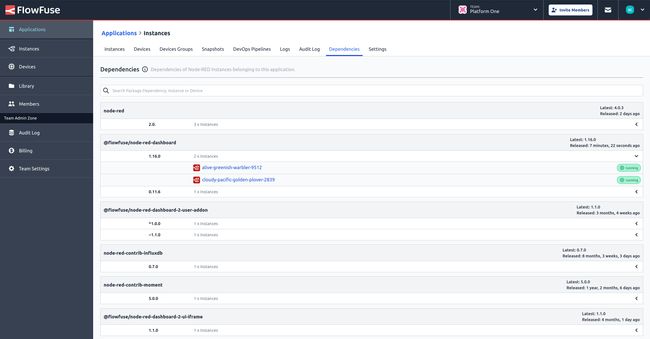
The intent is to give users a birds eye view of an application's dependencies and track dependency changes.
Users can search by package name, version, instance or device name.